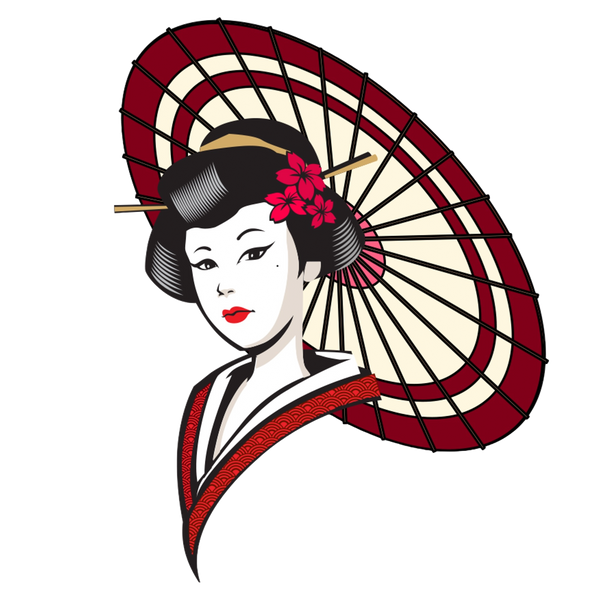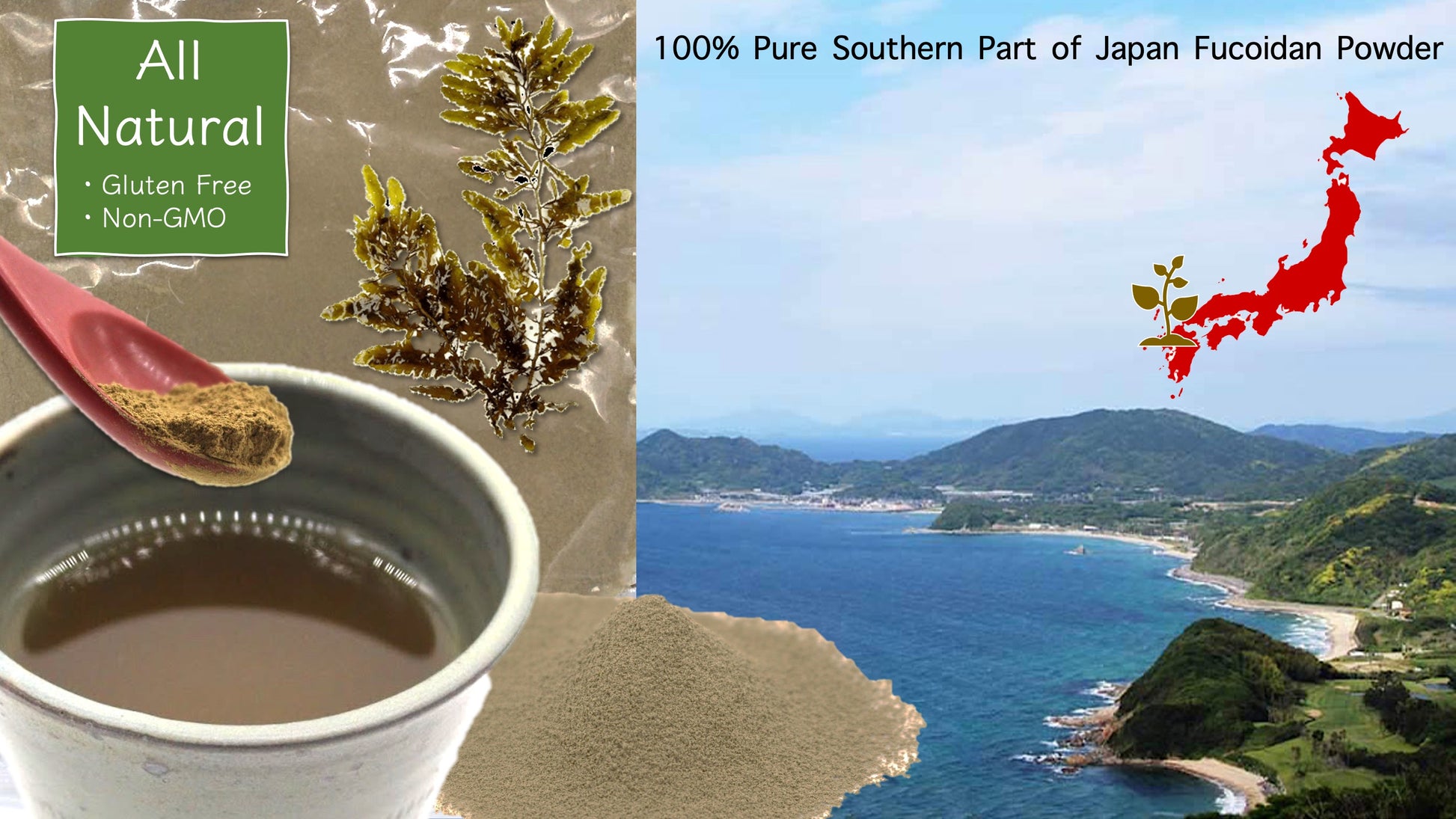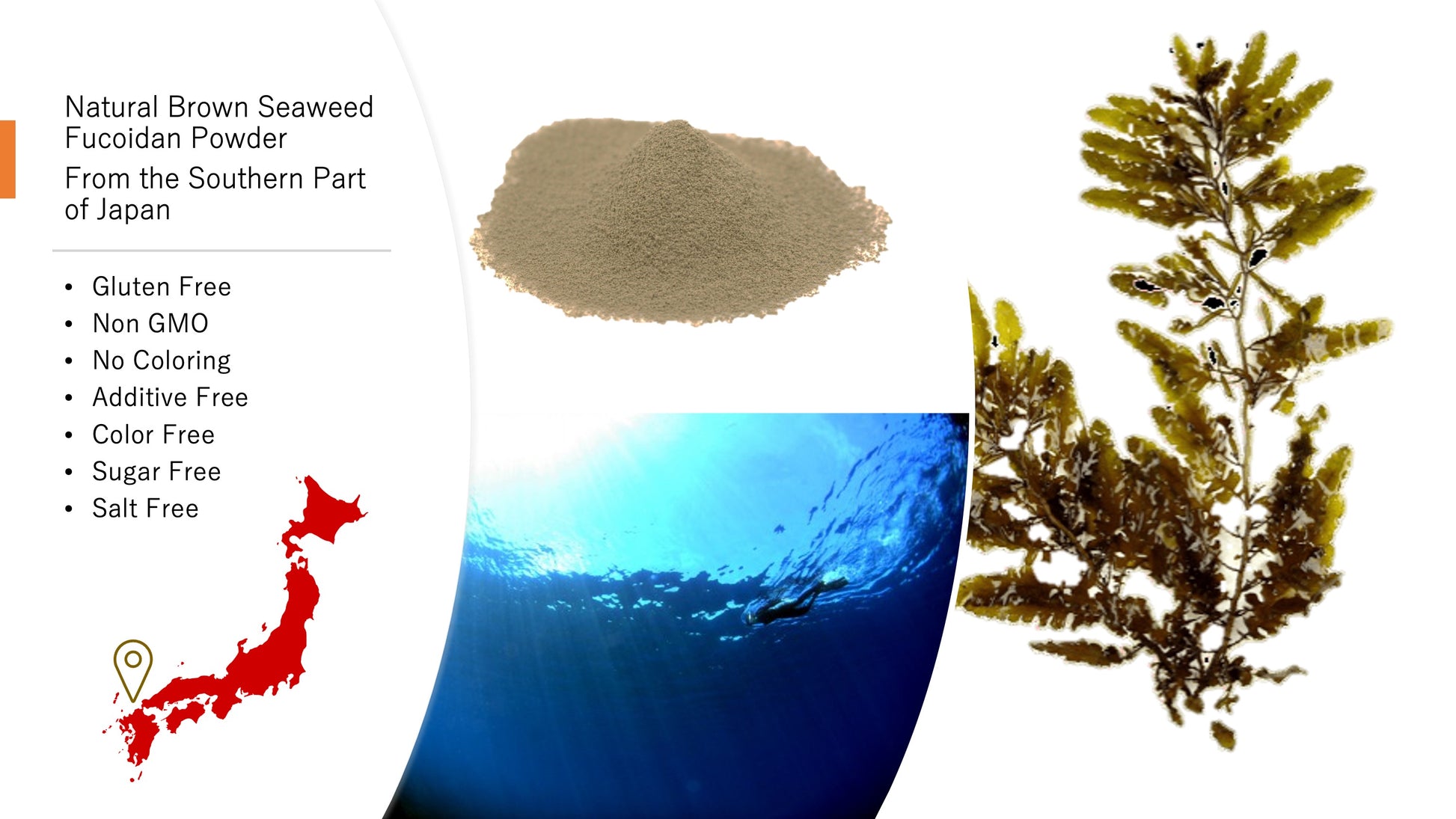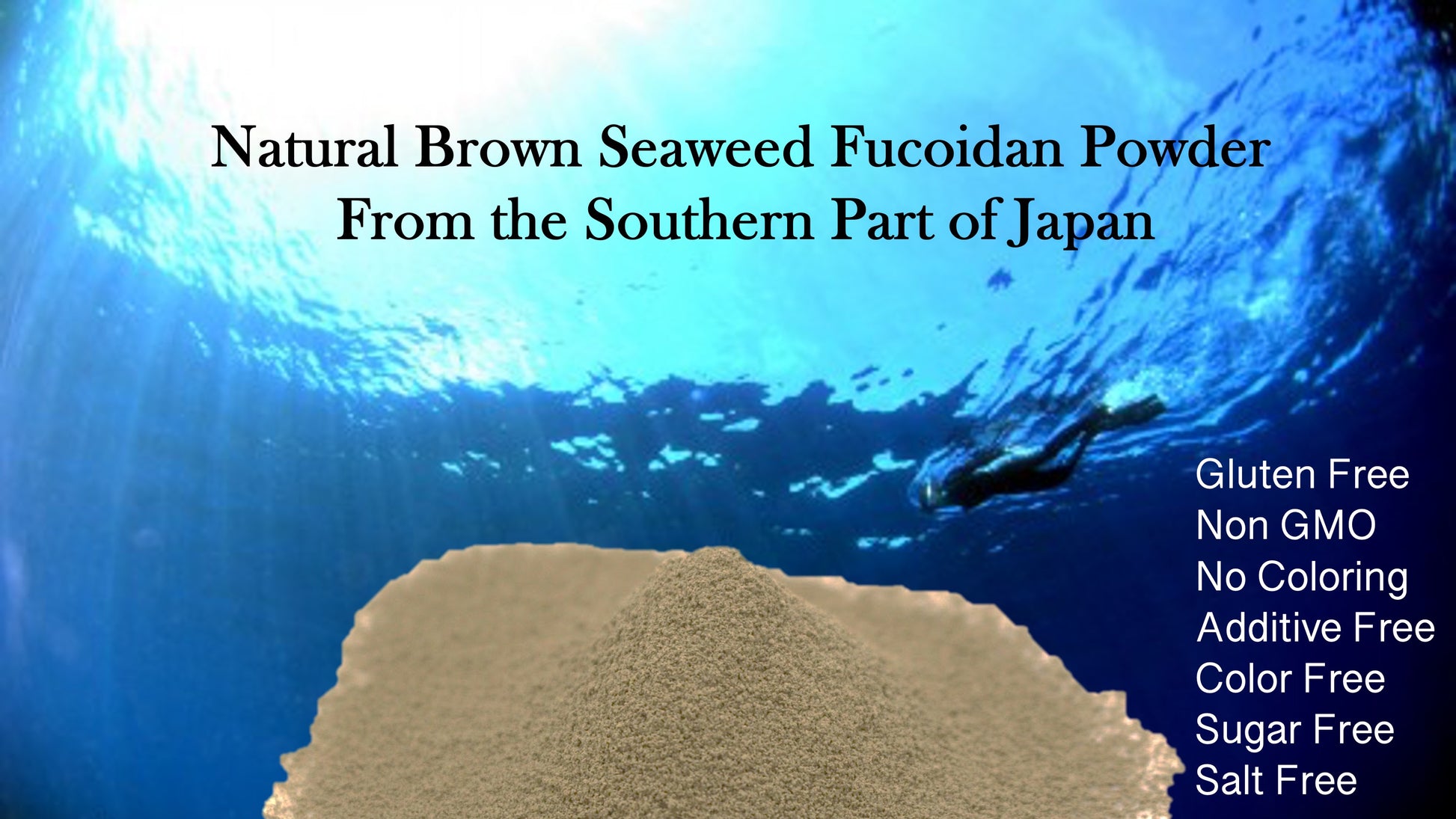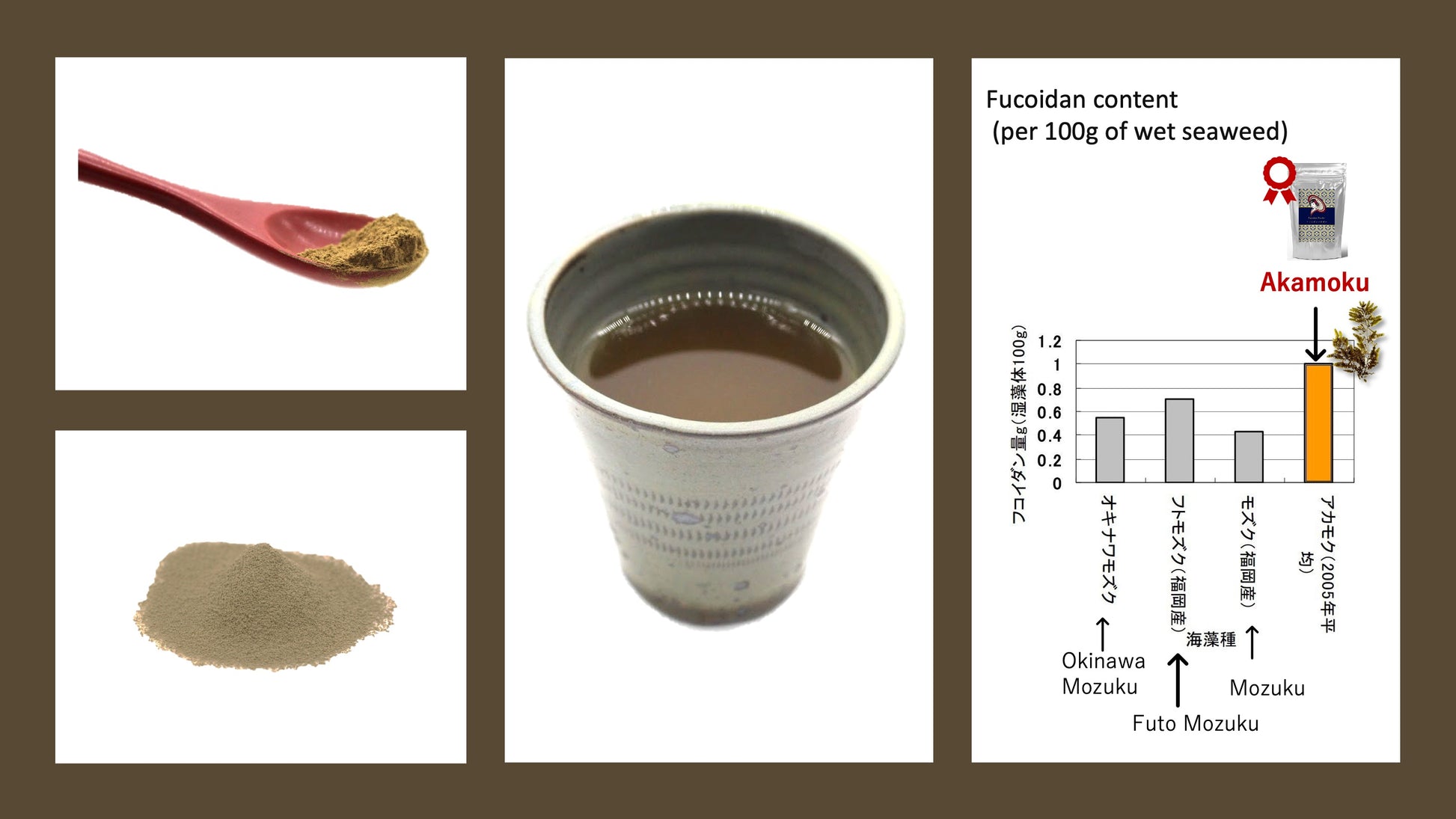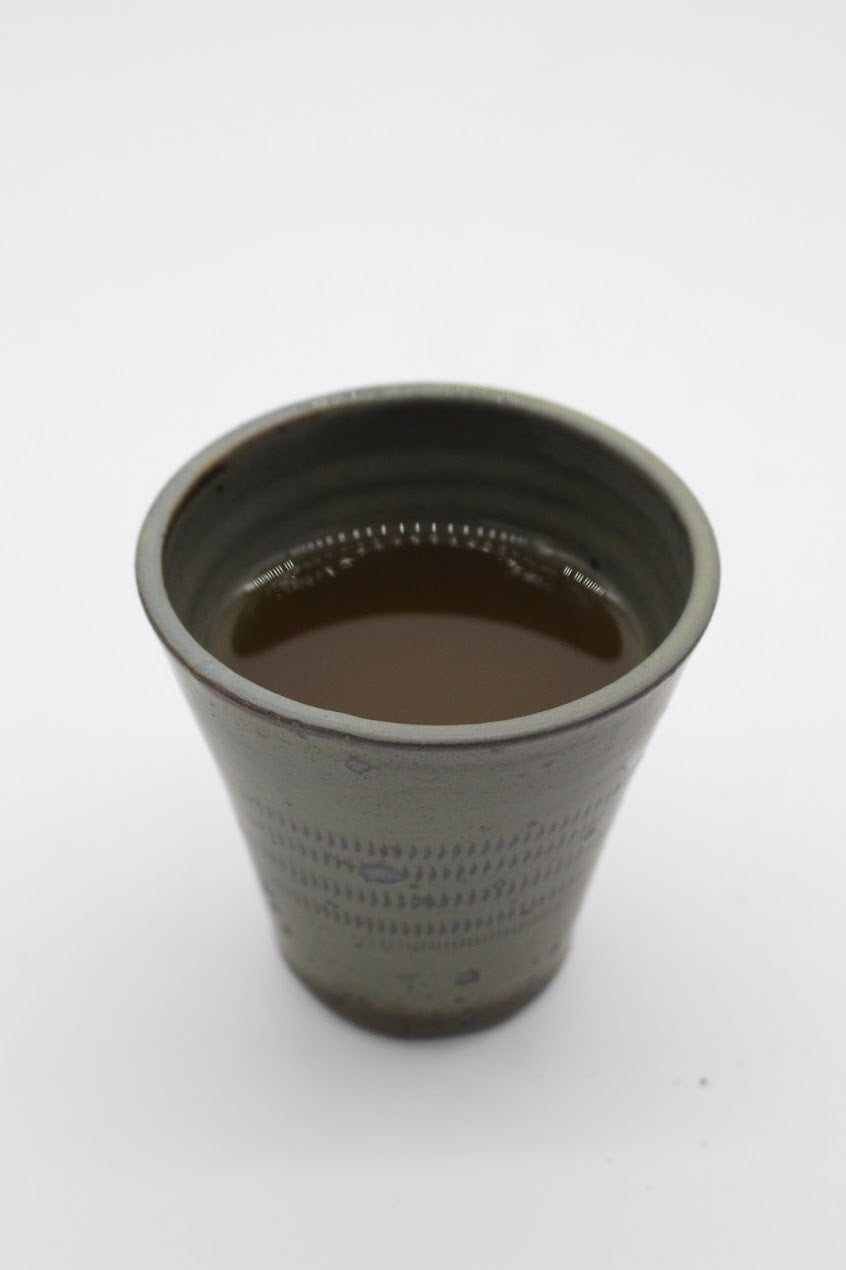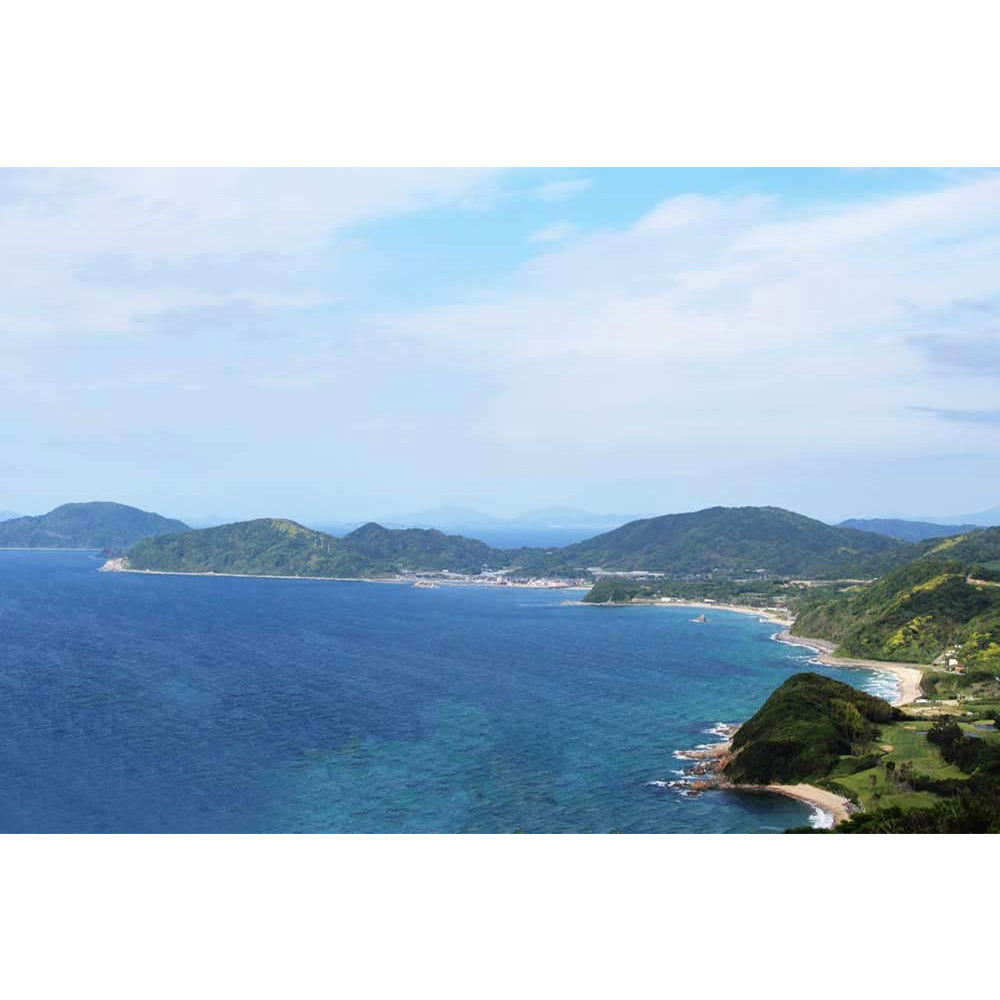Mukoh Matcha
[Fucoidan Powder] Hand-picked natural ‘Akamoku’ dried seaweed from Itoshima, Fukuoka, Kyushu Japan kelp seaweed [天然 乾燥 アカモク フコイダン 粉末 パウダー] 国産 九州産 福岡産 糸島産 玄界灘産 海藻天然 手摘み無添加 無香料 無着色
[Fucoidan Powder] Hand-picked natural ‘Akamoku’ dried seaweed from Itoshima, Fukuoka, Kyushu Japan kelp seaweed [天然 乾燥 アカモク フコイダン 粉末 パウダー] 国産 九州産 福岡産 糸島産 玄界灘産 海藻天然 手摘み無添加 無香料 無着色
无法加载取货服务可用情况
Experience the finest quality with our Direct Trade [天然 乾燥 アカモク フコイダン 粉末 パウダー], hand-picked from the pristine waters of the Itoshima coast in Fukuoka, Kyushu. Our seaweed is rich in fucoidan, a powerful nutrient with numerous health benefits. No additives, fragrances, or dyes. Elevate your health with every scoop.
アカモクの粘りや滑り成分のフコイダンは、抗腫瘍作用、免疫力向上などの作用が知られております。また、アカモクは食物繊維とミネラルが豊富で、ミネラルの中でもカリウム、ナトリウム、カルシウム、マグネシウムが多いといわれています。日本人の食事はミネラル、特にカルシウム、マグネシウム、鉄が不足しやすい傾向にあるので、食事で海藻類をあまり摂らない方には、アカモクは、美味しくミネラルが豊富に摂れる、最適の食品です。
The fucoidan in Akamoku (brown seaweed), which is responsible for its stickiness and slipperiness, is known to have anti-tumor and immune-boosting effects. Akamoku (brown seaweed) is also rich in dietary fiber and minerals, and among minerals, it is said to be high in potassium, sodium, calcium, and magnesium. Japanese diets tend to be deficient in minerals, especially calcium, magnesium, and iron, so for those who do not eat much seaweed in their diet, Akamoku (brown seaweed) is an ideal food that is delicious and rich in minerals.
アカモクは、粘りが強く、磯野香りがするので、細かくみじん切りにして、そのまま食べて頂いたり、お味噌汁に入れたり、おうどんにかけたりしてお食べ頂くのがお勧めです。アカモクを加えることにより、カルシウム、鉄のミネラルが20~30 %程度多くなるそうです。また、食物繊維は、アカモクを加えると、約5 %多くなることから、ぜひ、食事にはアカモクを追加したいものですね。参照サイト:食品分析開発センター
Akamoku (brown seaweed)has a strong stickiness and a fragrant aroma, so it is recommended to chop it finely and eat it as is, put it in miso soup, or pour it over udon noodles. By adding Akamoku (brown seaweed), the minerals calcium, and iron increase by about 20-30%. Also, dietary fiber increases by about 5% when Akamoku (brown seaweed) is added, so it is desirable to add Akamoku (brown seaweed) to meals. Reference site: Food Analysis Development Center.
✅ 国産 天然 アカモク 海藻 ギバサ 玄界灘産 糸島産 九州産 手摘み 海藻 フコイダンたっぷり Japanese natural Akamoku seaweed Gibasa Genkai-nada production Itoshima production Kyushu production Hand-picked seaweed Plenty of fucoidan.
✅ 海藻の中でもアカモクには、特に多くのフコイダンが含まれています。フコイダンは、水溶性の食物繊維ですので、腸に入ると溶けて粘り気を出し、排便を助長してくれます。Among seaweeds, Akamoku seaweed contains particularly high amounts of fucoidan. Fucoidan is a water-soluble dietary fiber, so when it enters the intestine, it dissolves and produces a sticky texture, promoting bowel movements.
✅ アカモクには、フコイダンと共に、フコキサンチンも含まれています。フコキサンチンには、脂肪を燃焼させる細胞を増加させる働きがあり、アカモクに含まれるフコキサンチンの量は、ワカメの2倍。1日10gのアカモクと食べるのがお勧めです。In addition to fucoidan, Akamoku seaweed also contains fucoxanthin. Fucoxanthin has the effect of increasing the number of cells that burn fat, and the amount of fucoxanthin in Akamoku seaweed is twice that of wakame. It is recommended to eat 10g of Akamoku seaweed per day.
✅ アカモクは一日経つと成分が消えてしまうので、毎日食するのがお勧めです。It is recommended to eat Akamoku seaweed every day because its ingredients disappear after a day.
✅ アカモクには、ミネラル、ポリフェノール、食物繊維が豊富に含まれています。Akamoku seaweed is rich in minerals, polyphenols, and dietary fiber.
✅ このアカモクは、九州 福岡の糸島近海で育った天然のアカモクを、地元の漁師が手摘みしております。添加物などは一切入っておりません。This Akamoku seaweed is hand-picked by local fishermen from natural Akamoku seaweed grown in the waters near Itoshima, Fukuoka, Kyushu. It contains no additives.
✅ 茹でて、乾燥しておりますので、日持ちしますが、高温多湿は避け、なるべく早くご使用ください。It has been boiled and dried, so it will last for a while, but please avoid high temperatures and humidity and use it as soon as possible.
✅ アカモクには、フコイダンやフコキサンチンの他にも、マグネシウム、カルシウム、カリウム、亜鉛、鉄分、ビタミンK、βカロチン、ビタミンC、食物繊維、ポリフェノールなどの成分が含まれています。In addition to fucoidan and fucoxanthin, Akamoku also contains magnesium, calcium, potassium, zinc, iron, vitamin K, β-carotene, vitamin C, dietary fiber, and polyphenols.
✅ 高温多湿をさけ、夏は冷蔵庫に保管してください。Avoid high temperature and humidity and keep in the refrigerator in the summer.
✅ Itoshima is located on the lower left side (lower west side) when looking at a map of Japan. The location of the tsunami that everyone is worried about is on the upper right side, so it is the farthest place on the opposite side. The raw material is seaweed called Akamoku, which is grown in a clean, uncontaminated seabed and is rich in fucoidan and fucoxanthin.
分享
![[Fucoidan Powder] Hand-picked natural ‘Akamoku’ dried seaweed from Itoshima, Fukuoka, Kyushu Japan kelp seaweed [天然 乾燥 アカモク フコイダン 粉末 パウダー] 国産 九州産 福岡産 糸島産 玄界灘産 海藻天然 手摘み無添加 無香料 無着色](http://mukoumatcha.com/cdn/shop/products/1-akamoku-fucoidan-powder.jpg?v=1693240853&width=1445)
![[Fucoidan Powder] Hand-picked natural ‘Akamoku’ dried seaweed from Itoshima, Fukuoka, Kyushu Japan kelp seaweed [天然 乾燥 アカモク フコイダン 粉末 パウダー] 国産 九州産 福岡産 糸島産 玄界灘産 海藻天然 手摘み無添加 無香料 無着色](http://mukoumatcha.com/cdn/shop/files/akamoku-seaweed-fucoidan-powder8.jpg?v=1693240853&width=1445)
![[Fucoidan Powder] Hand-picked natural ‘Akamoku’ dried seaweed from Itoshima, Fukuoka, Kyushu Japan kelp seaweed [天然 乾燥 アカモク フコイダン 粉末 パウダー] 国産 九州産 福岡産 糸島産 玄界灘産 海藻天然 手摘み無添加 無香料 無着色](http://mukoumatcha.com/cdn/shop/files/fucoidan-powder2.jpg?v=1693240853&width=1445)
![[Fucoidan Powder] Hand-picked natural ‘Akamoku’ dried seaweed from Itoshima, Fukuoka, Kyushu Japan kelp seaweed [天然 乾燥 アカモク フコイダン 粉末 パウダー] 国産 九州産 福岡産 糸島産 玄界灘産 海藻天然 手摘み無添加 無香料 無着色](http://mukoumatcha.com/cdn/shop/files/brown-seaweed-fucoidan-powder.jpg?v=1693240853&width=1445)
![[Fucoidan Powder] Hand-picked natural ‘Akamoku’ dried seaweed from Itoshima, Fukuoka, Kyushu Japan kelp seaweed [天然 乾燥 アカモク フコイダン 粉末 パウダー] 国産 九州産 福岡産 糸島産 玄界灘産 海藻天然 手摘み無添加 無香料 無着色](http://mukoumatcha.com/cdn/shop/files/6-japanese-fucoidan-powder.jpg?v=1693240853&width=1445)
![[Fucoidan Powder] Hand-picked natural ‘Akamoku’ dried seaweed from Itoshima, Fukuoka, Kyushu Japan kelp seaweed [天然 乾燥 アカモク フコイダン 粉末 パウダー] 国産 九州産 福岡産 糸島産 玄界灘産 海藻天然 手摘み無添加 無香料 無着色](http://mukoumatcha.com/cdn/shop/files/akamoku-seaweed-fucoidan-powder.jpg?v=1693240853&width=1445)
![[Fucoidan Powder] Hand-picked natural ‘Akamoku’ dried seaweed from Itoshima, Fukuoka, Kyushu Japan kelp seaweed [天然 乾燥 アカモク フコイダン 粉末 パウダー] 国産 九州産 福岡産 糸島産 玄界灘産 海藻天然 手摘み無添加 無香料 無着色](http://mukoumatcha.com/cdn/shop/files/akamoku-fucoidan-powder4.jpg?v=1693240853&width=1445)
![[Fucoidan Powder] Hand-picked natural ‘Akamoku’ dried seaweed from Itoshima, Fukuoka, Kyushu Japan kelp seaweed [天然 乾燥 アカモク フコイダン 粉末 パウダー] 国産 九州産 福岡産 糸島産 玄界灘産 海藻天然 手摘み無添加 無香料 無着色](http://mukoumatcha.com/cdn/shop/files/itoshima-kakigoya-hattoriya3.jpg?v=1693240853&width=1445)
